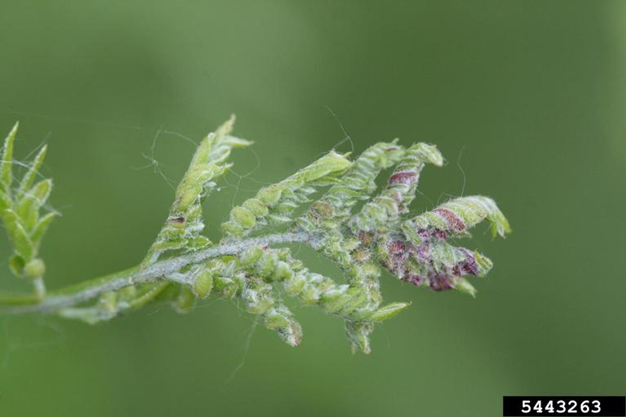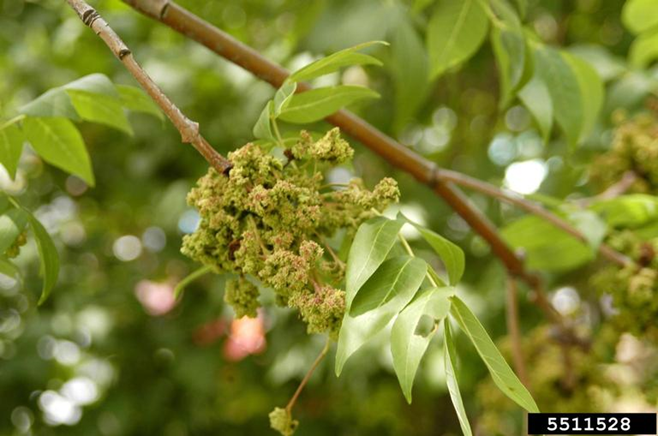Common Shade Tree Galls
ENTFACT-403: Galls of Common Shade Trees | Download PDF
by Jonathan L. Larson, Extension Entomologist
University of Kentucky College of Agriculture
Fast Facts
- Galls are a plant deformity that is caused by an insect, mite, or pathogen; though they may appear strange, most galls are not problematic for plants
- Insects and mites that cause galls can often be found inside the gall where they are using the structure as food and shelter
- These formations may appear on leaves, twigs, flowers, buds, stems and roots of plants
- Most galls are named after the shape of their gall as well as their host plant (most gall makers are highly specific to one kind of plant)
Introduction to Galls
Galls are abnormal plant growths that can be caused by a variety of organisms and pathogens. Arthropods can induce gall production with secretions during egg laying or with saliva while feeding. Galls usually form in the still growing tissues of the plant rather than older growth. Inside of galls there can be insects or mites taking advantage of the food and shelter provided by the gall.
Most galls are harmless to plants. There are exceptions, such as the horned oak gall. Galls and gall makers are usually named after the host plant and the shape of the gall. Mites, psyllids, aphids, flies, wasps, and midges are some of the most common arthropods that can induce galls.
Common Galls in Kentucky
Hackberry Nipplegall
Hackberry nipplegall makers are psyllids, insects that are related to aphids and cicadas. They are also known as jumping plant lice. As immatures, they will develop in uniquely shaped galls on the leaves of hackberries. Almost all hackberry trees are host to some galls. There is usually no ill effect from these galls though there can sometimes be so many of them that the tree experiences premature leaf drop.

The adults overwinter in cracks and crevices in bark, though they will sometime use houses as well (they do not cause any damage to structures though). As the hackberry trees begin to grow new leaves, the psyllids will lay eggs in the young tissues. The gall forms over the summer, and mature psyllids will emerge at the start of autumn. There is only one generation per year.
Honeylocust Pod Gall Midge
The adult midge of this species is a small fly that emerges from overwintering near the tree at the time of bud break. Infested trees will have new growth that looks gnarled or dry. Upon closer inspection, deformed and swollen leaflets will be found. Inside of the leaflets will be small orange maggots utilizing the gall.

In Kentucky, there are likely about five generations per year. These galls will not kill a tree, though there can be aesthetic issues in heavy infestations. Raking up fallen galls and destroying them can be helpful.
Ash Flower Galls
Ash flower galls are induced by small mites and affect the male flowers. They are a type of eriophyid mite, banana shaped mites that can only be seen with proper magnification.
The mites overwinter in bark crevices, emerging in the spring to migrate to male flowers to induce gall formation. They will lay their eggs in the galls and their offspring will live in and feed in the galls. In the spring and summer, the galls are green and puffy. They could be described as pom-pom like or even broccoli-like growths in the flowers. In the late summer and fall, the galls will dry, this causes them to turn brown and harden and they can remain in the tree all winter long.
Female mites will mate in the fall and prepare to overwinter afterwards. There are multiple generations per summer. Ash flower galls are not primary pests of ash and ash trees are less common now than before the arrival of emerald ash borer in the state. Trees that have been treated for that beetle pest will likely still have flower galls.

General Gall Management
Pruning galls out of trees or raking fallen galls up and destroying them can help reduce gall populations in a given area. Many galls are also kept in check by natural enemies, spraying with insecticides can upset that natural balance.
One treatment option can be dormant oil applications in the winter. Many gall makers can be killed when they overwinter outside of the galls with these organic applications.
Revised: 5/25
CAUTION! Pesticide recommendations in this publication are registered for use in Kentucky, USA ONLY! The use of some products may not be legal in your state or country. Please check with your local county agent or regulatory official before using any pesticide mentioned in this publication.
Of course, ALWAYS READ AND FOLLOW LABEL DIRECTIONS FOR SAFE USE OF ANY PESTICIDE!
Images: University of Kentucky Entomology.
